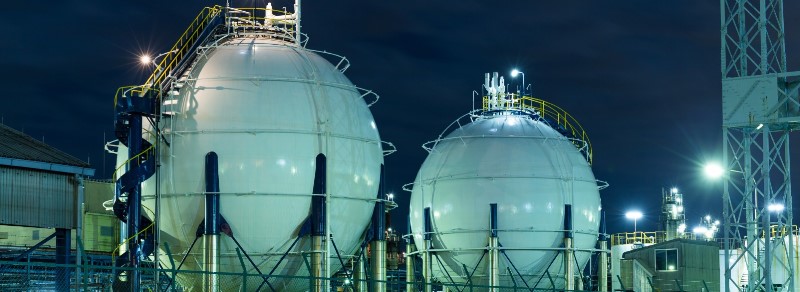By Grace Goodrich
Since initial exploratory drilling in 2007 by U.S. operator Anadarko, Mozambique has uncovered vast natural gas volumes within its offshore basins and now carries the potential to be the fourth largest natural gas exporter globally. Over the past decade, major operators have started developing the requisite infrastructure to exploit the reserves, generate exports and bring revenue into the country, strengthened by strong government leadership in gas exploration and gas-to-power developments.
The transformative nature of Mozambique’s natural gas discoveries lies in its ability not only to produce raw gas exports, but also to stimulate long-term, sustainable economic growth, a position that has prioritized been by H.E. President Filipe Nyusi. Recently selected as Africa Oil & Power’s “Person of the Year” for 2020, President Nyusi has been at the helm of Mozambique’s energy sector during its many recent successes, establishing natural gas as a means of generating long-term economic diversification, skills development and job creation across the energy, agriculture, agro-processing, manufacturing and construction sectors. Industrialization through gas monetization initiatives – refining gas into liquid fuels, fertilizers and other derivatives – also carries the ability to boost domestic income, produce more exports and in greater quantities, and reduce vulnerability to global market volatility.
In an effort to further extend short-term financial gains to long-term economic development, Mozambique has sought to promote domestic production linkages, job creation and the participation of small and medium enterprises across its energy supply value chain.To facilitate cross-sector cooperation,Africa Oil & Power, in partnership with the Ministry of Mineral Resources and Energy, the African Energy Chamber and Attitude HR, will unite global investors and policymakers for the inaugural Mozambique Gas & Power Conference & Exhibition 2021 (March 8-9 2021). Under the theme, ‘Leveraging LNG: Building a Prosperous Mozambique,’ the event will focus on investment, downstream diversification and local capacity building across the energy value chain.
Large-Scale Gas Investments
Mozambique is currently home to not one but three of the leading gas development projects on the continent. With a total post-FID investment of $20 billionand $14.9 in project financing, Mozambique LNG represents the largest foreign direct investment in Africa to date, and a landmark development for the continent in terms of domestic LNG use and export. Spanning 2.6 million acres in the deep-water Rovuma Basin, the Total-operated offshore Area 1 block includes the Prosperidade Complex, estimated to hold recoverable resources between 17 and 30 trillion cubic feet (Tcf) of natural gas and to produce two billion cubic feet of natural gas per day through the installation of up to 60 subsea production wells fed into Afungi’s two-train liquefaction plant, as well as installation of three gas export pipelines, one service line and two mono-ethylene glycol lines. The Complex also houses the Golfinho-Atum Complex, which holds around 31.9 Tcf of natural gas resources and is also expected to produce two billion cubic feet (Bcf) per day through the development of 20 subsea wells with horizontal trees distributed among 10 manifolds.
The Rovuma LNG Liquefaction Plant, the country’s other large-scale, capital-intensive natural gas project, will utilize gas resources from the Mamba Complex in Area 4 and the Coral South project. Development includes two liquefaction trains with respective capacity of 7.6 million tons per year, a multi-purpose dock and an LNG export jetty with two marine loading berths to accommodate LNG carriers. Although ExxonMobil delayed its final investment decision due to COVID-19, the decision is expected next year and production is still expected to begin in 2024/25, producing 15-16 million tons of LNG per year.
The third major gas development in the country is Coral FLNG project, which will construct a 3.4 mtpa FLNG vessel to service the Coral Gas field in Area 4. The vessel will be comprised of a turret moored double-hull ship with gas receiving, processing, liquefaction and offloading facilities, along with LNG and condensate storage totaling over 230,000 and 50,000 cubic meters, respectively. Italian multinational Eni is leading construction on the ultra-deep-water development, which will be uniquely able to capture and monetize small and stranded reserves using low-cost, small-scale infrastructure.
Lighting up the Continent
Mozambique has not only invested in the construction of gas-processing facilities, but also in gas-to-power infrastructure that seeks to meet one of the continent’s most critical needs: electricity. Mozambique’s electricity market is dominated by hydropower generation capacity, largely utilized for exports to neighboring South Africa and Zimbabwe via the Southern African Power Pool. Given Mozambique’s rich energy resources and neighboring South Africa’s lack of a reliable, affordable energy supply,the planned Mozambique (Cabo Delgado) to South Africa (Richard’s Bay) Gas Pipeline will supply natural gas from the Rovuma Basin to South Africa. Spanning 2,450Km, the project is still in its early stage of planning and aims to supply gas-to-power markets in South Africa, a country that largely depends on coal-fired power stations otherwise.
Led by Mitsui OSK Lines and Karpower International, Nacala LNG-to-Powership is another power project underway and represents Mozambique’s first LNG-to-Powership development. The project involves the construction and operation of a Floating Storage Regasification Unit (FSRU), which will deliver re-gasified LNG to a powership, where it will then convert the LNG into electricity to power the national grid. The powership will be connected to the grid through a transmission and distribution facility operated by state-owned utility Electricidade de Mocambique. While the powership is already in operation, it is heavily reliant on fuel oil, and the installation of the FSRU will enable the use of a cleaner, lower-carbon energy source. The project is anticipated to begin in 2021, in which it would be the first LNG-to-power solution and FSRU project in Eastern and Southern Africa. Raising the electricity access rate – which currently hovers around 40% – through gas-focused initiatives, such as Mozambique’s integrated LNG-to-power project, will serve to electrify households and industry alike.
Source AOP

